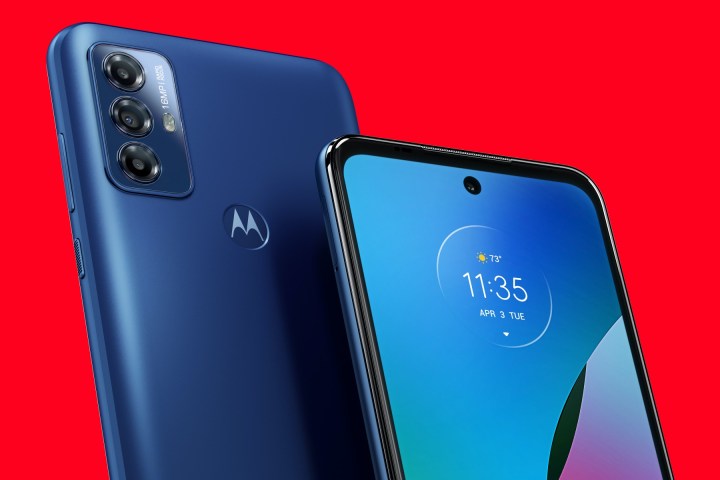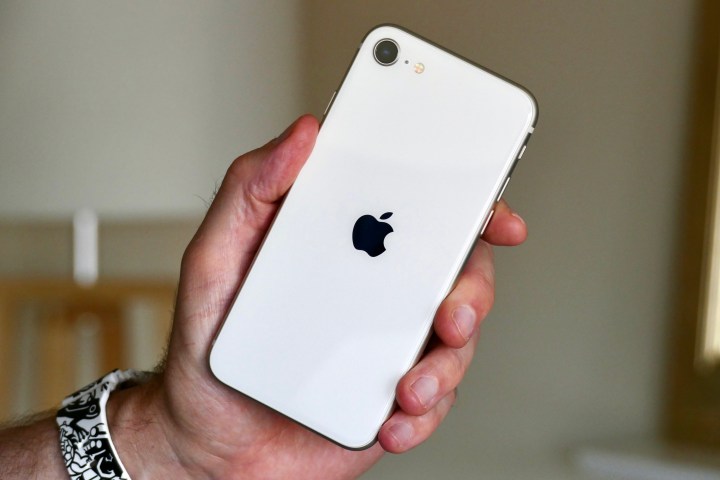
When it comes to the smartphone market, you’re going to find a huge mix of very budget-friendly options, mid-range options, and premium, top-of-the-line flagship devices. As great as flagships like the iPhone 14 Pro, Pixel 7 Pro, and Samsung Galaxy S22 Ultra are, not everyone can afford a phone that starts at around $1,000 and goes up from there.
While there are some decent mid-tier smartphones, you’ll need to be careful when considering the truly budget-friendly “cheap” devices. Here are a few warning signs that you should consider before you’re tempted by that smartphone that seems too good to be true (because it probably is).
Look at the amount of internal storage

As you shop for a new smartphone, one of the most important things to consider is the amount of internal storage. These days, the absolute bare minimum amount of storage that a phone should have should be at least 64GB, and ideally 128GB. I mean, yeah, you could squeeze by with 64GB if you are super cognizant of what you download and do with your phone, but 128GB is the perfect starting point.
Motorola recently announced its new Moto G Play (2023) phone, which is a mere $170. Tempting, right? But it only comes with a single storage capacity, which is 32GB. These days, you can literally fill up 32GB in a few days, because most of that space is also taken up by the operating system itself — in this case, it’s Android 12.
Think about the size of apps and games from the Google Play Store, which could range from a few dozen megabytes to a gigabyte or more, depending on how big the graphics and other elements are for said game or app. Then consider photos and videos you may want to take, or even download to look back on. What about downloaded audio or video to keep yourself entertained when you can’t get a data connection?
These are all things to consider, and something like the G Play’s 32GB of storage is pretty much nothing these days. Sure, you could expand the storage on the G Play since it supports microSD cards up to 512GB, but you’ll still get sluggish performance if that internal storage is full. And since there’s so little of it, there’s no doubt that would happen.
Always take a look at what the cheap budget phone offers in terms of storage. No one these days can get by on 32GB, which is actually even less since most of the OS takes up the space already. Consider putting that money towards something with more base storage instead.
Make sure the charging speed can handle the battery size

You’ll always want to make sure to check the battery capacity and charging speeds to make sure that your phone can, you know, get you through an entire day, at least. There are a few options on the more affordable side that give you huge batteries, like the OnePlus Nord N300 5G, which has a massive 5,000mAh battery and up to 33W fast charging for just $230.
But again, the Moto G Play (2023) shows how not to do things. It also comes with a 5,000mAh battery, and at first, that seems like a great deal for $170. But unfortunately, unlike the OnePlus Nord N300 5G, the new G Play only has up to 10W charging speed — and this is wired! It doesn’t even have wireless charging, which is what you’d expect for 10W. With a 5,000mAh battery, charging it at 10W will take a very long time, so don’t expect to get a quick charge midway through the day. For phones like this, an overnight charge is the only way to go, really. Though Motorola says you’ll get up to three days of battery with a single charge, so an overnight charge every few days isn’t too bad.
But if you want an affordable phone with a big battery that can get you through the day, make sure to double-check the charging speeds too. No one likes to wait around for a full charge in the middle of the day if it comes to that.
Ah, my eyes! Check the display and resolution

If you’re in the market for affordable phones, then you shouldn’t expect something like an iPhone 14 Pro with a 120Hz ProMotion OLED display with 460 pixels per inch (ppi). But you should also make sure that the resolution is good enough by today’s standards.
The Moto G Play (2023) only has an HD+ display that maxes out at 1600 x 720 resolution. This means it has a ppi of about 270. This is in line with a phone in this price range, though, and it does have a 90Hz refresh rate — which is actually more than the iPhone 14’s 60Hz.
But still, this is a device that you’ll be staring at for most of the day. I personally noticed a huge difference when going from an iPhone 3GS to an iPhone 4 when Apple introduced the Retina Display, and there’s a big difference when going from an HD LCD display to OLED. When you have a lower-resolution display, things may look fuzzier around the edges, and objects may not be as sharp. Overall performance may be affected too, with frame rate dips and stuttering, especially in graphic-intensive games.
So even if a smartphone is super tempting because of a low price tag, consider the overall appearance of the display and performance of a device you’ll be looking at and using all day. Is it really worth it?
Chips, RAM, and why they matter

Computer chips, in general, are always evolving, including those found in smartphones. To make a smartphone super affordable, it’s not uncommon for them to use an older chip, perhaps one from a year or two ago.
While the average person may not think about the chip that is in their smartphone, it’s important to verify. That’s because you should have a smartphone that can last at least two years, which is about the typical upgrade cycle.
For example, take a look at the Moto G Play (2023) again. The phone will be launched on January 12, 2023. However, it uses a MediaTek Helio G37 chip, which originally launched in late 2020. So in 2023, this phone is already using an entry-level chip that is over two years old. At this point, even entry-level smartphone chips would have improved in two years, so why drop money on old and outdated chips?
RAM is also a significant factor that affects a phone’s performance. Most typical budget Android devices have at least 4GB of RAM at that price point, which is fine. But the G Play and other budget phones only have 3GB of RAM, so they don’t even meet that bare minimum of 4GB. Again, the money can be better spent on something a little better.
The importance of software updates

Motorola is shipping the G Play (2023) with Android 12, and it will only receive one software update to the current Android 13. After that, no more software updates besides security updates.
And long-term updates aren’t limited to expensive flagships these days. The Galaxy A53 5G can be purchased for around $449 or $349 and is guaranteed four years of Android updates. If you plan to use your phone for more than a year, this isn’t something you want to overlook.
Don’t be fooled by multiple camera sensors

You may see multiple cameras on a cheap Android phone, but don’t be fooled — these aren’t always what they seem. For example, on an iPhone 14 Pro, you have a triple-lens camera system with main, ultra-wide, and telephoto camera lenses. You may be trained to think that every phone with multiple cameras on the rear has main and ultra-wide sensors, which has become standard. But that’s not entirely the case.
I thought that the OnePlus Nord N300 5G had a dual camera system, but that is not the case at all. Once I actually got my hands on it, the second “camera” just turned out to be a 2MP depth sensor, which honestly didn’t even help the photos out very much. The Moto G Play (2023) may look like it has a triple camera system, but it’s really just one 16MP camera with a 2MP depth sensor and a 2MP macro sensor.
One may think that it isn’t a very big deal — as long as the phone can take some good pictures, right? Well, yes, but I wasn’t even that impressed with how the OnePlus Nord N300 5G did when it comes to photos. Images appeared a little too artificial in terms of color, so it was off from what you would see in real life, or it was terribly washed out.
If you care about photo quality at all, then don’t be fooled by these cheap phones and what looks like multiple camera systems.
Why spend money on junk when you can put it towards something better?

I know — the price may be tempting when you can grab a smartphone for less than $200 or $300. But sometimes, there are just too many flaws on the phone, and it ends up being something you may regret. Seriously, if you are considering picking up a phone because it’s cheap, make sure that the specs are at least good by today’s standards. If not, you can take that money and put it toward something you’ll actually enjoy using.
Yes, I know — what if you’re just buying a cheap phone as a backup in case of emergencies? That may work, but if it’s really for an emergency backup phone for just calls and texts, you could really just consider getting a non-smartphone for even less.
Just because you can get a dirt cheap Android phone, even as a backup, doesn’t always mean you should.
Editors’ Recommendations

